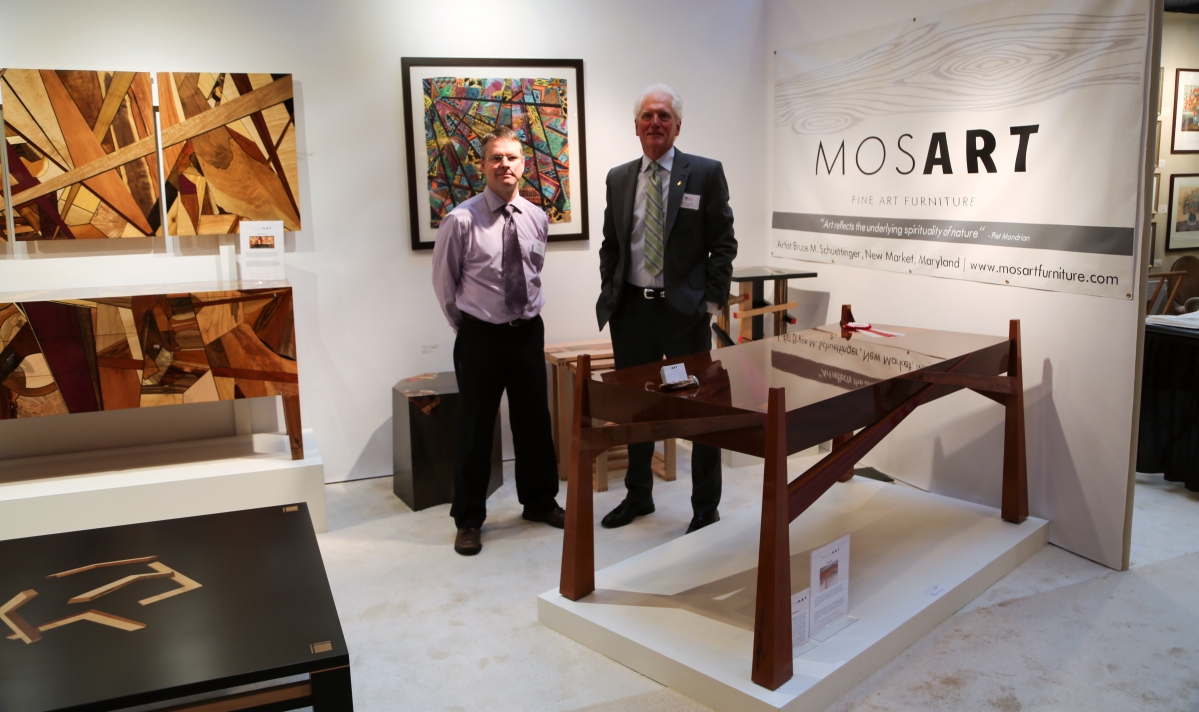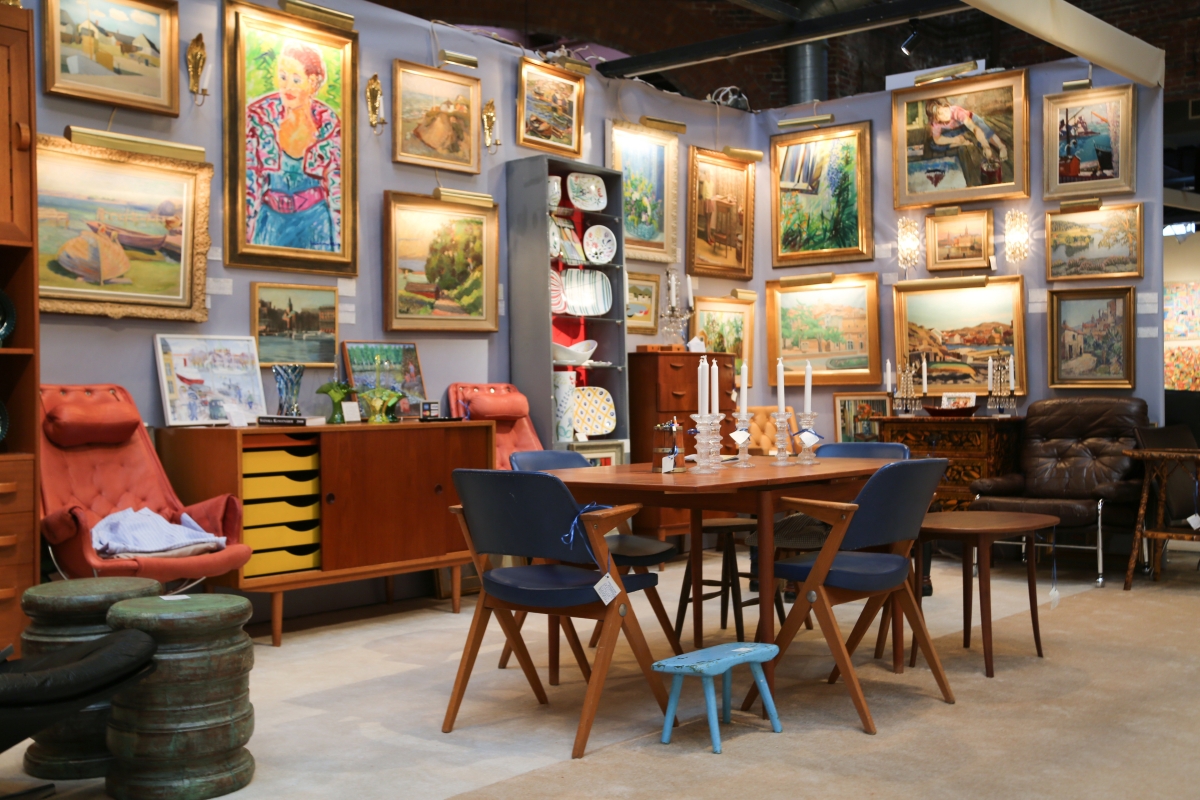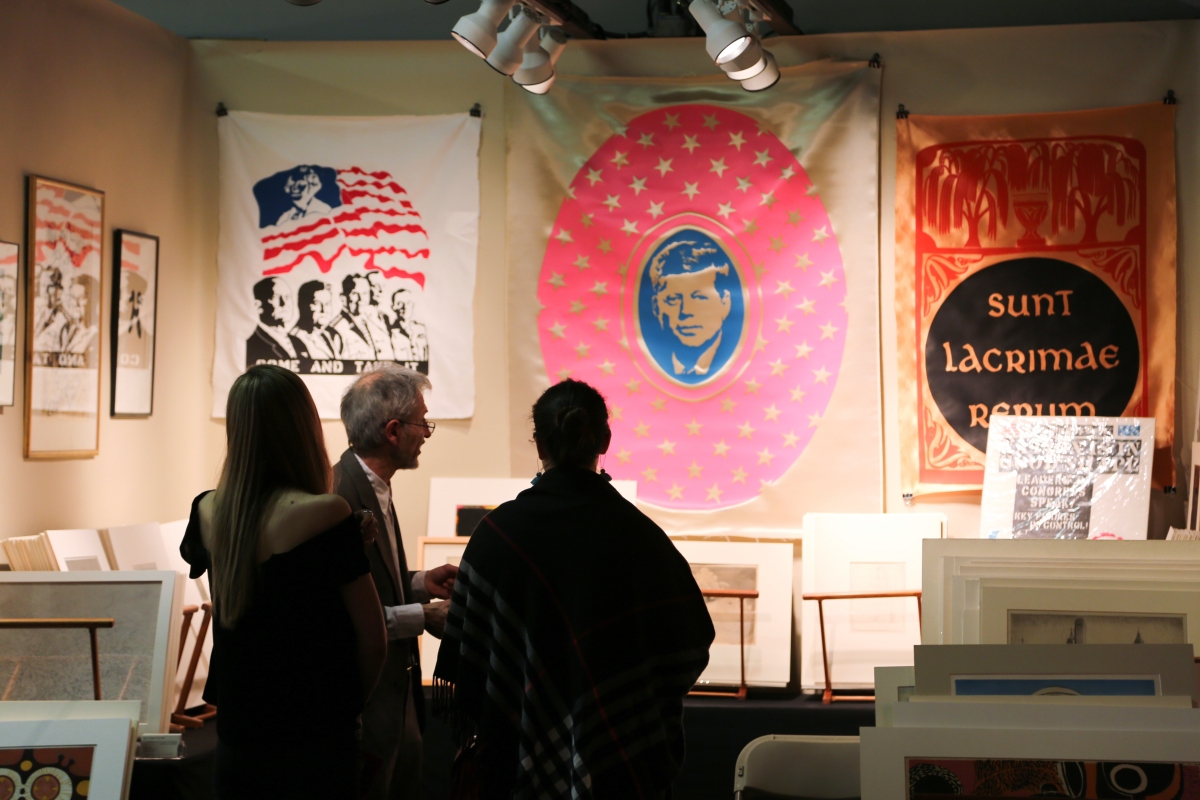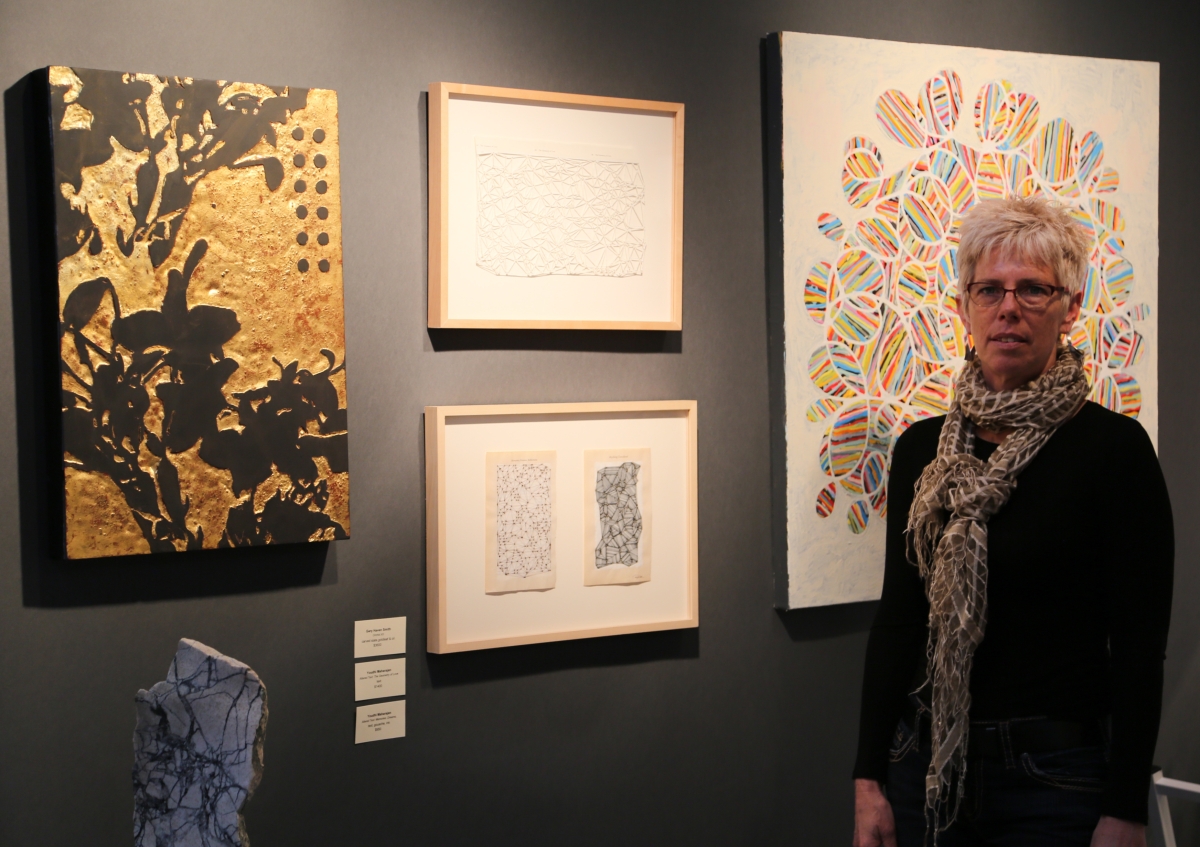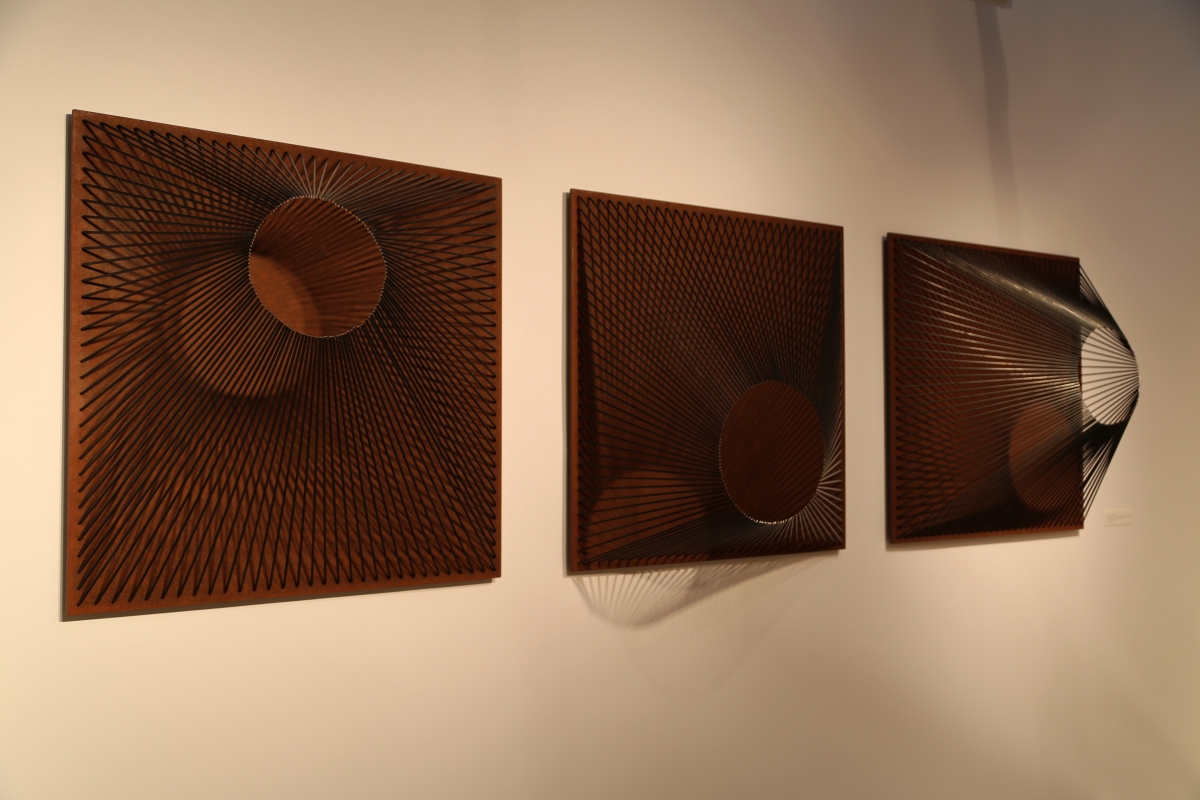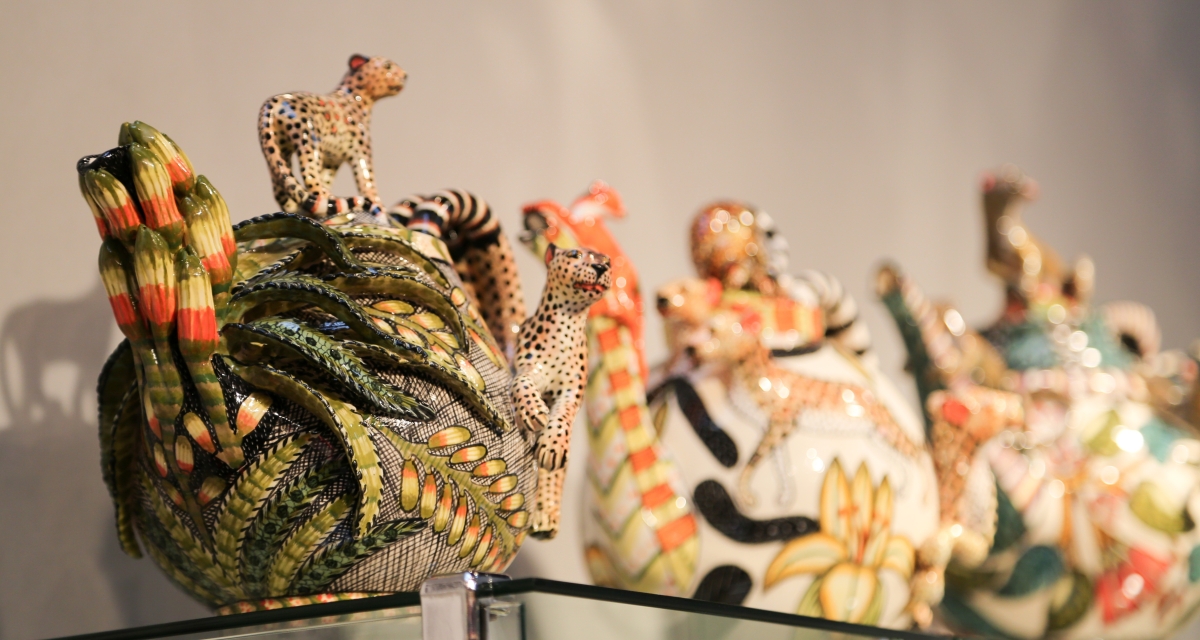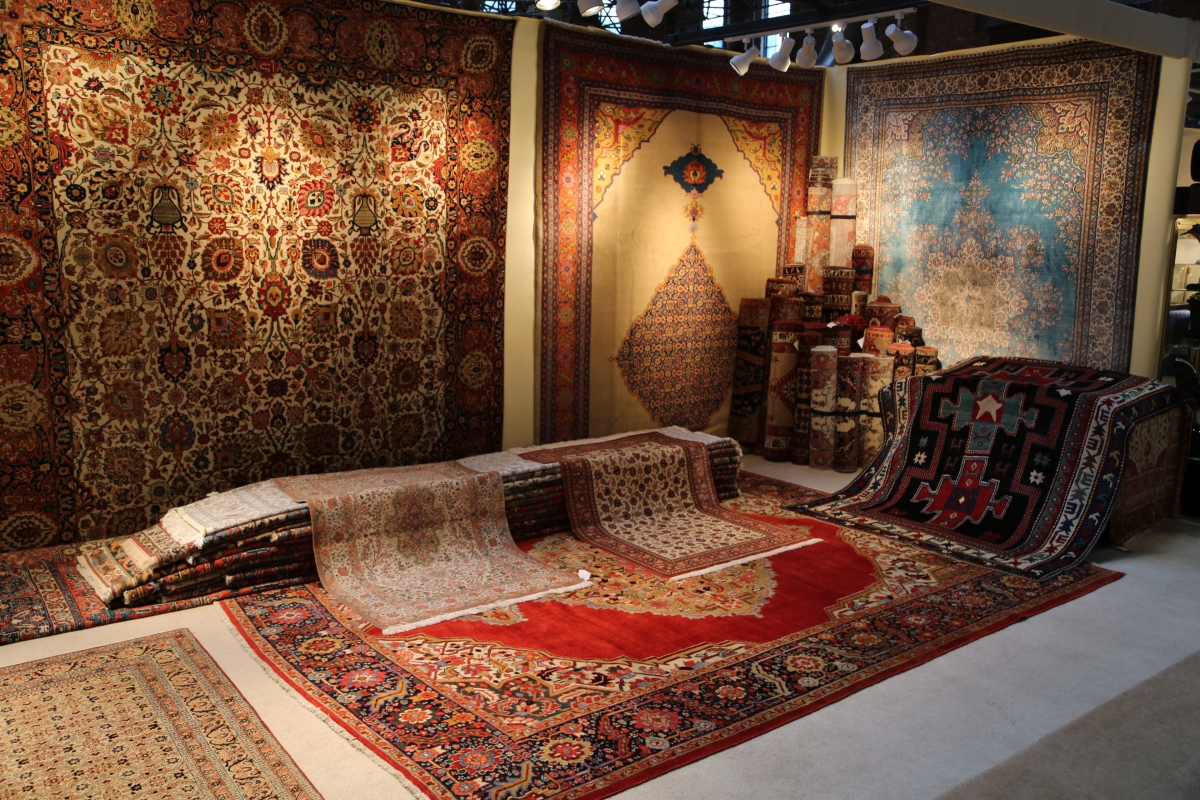Review and Photos by Greg Smith
BOSTON, MASS. – Moving into the Twenty-First Century, Boston would have had difficulty branding itself as a hotbed of design. The city four hours south usually steps up for that, followed by others, but things are starting to turn over in the historic city as a youthful population begins to till the soil into an energetic town with progressive developments and an ongoing cultural amalgamation that is producing more nowadays than a bizarre way of pronouncing “ar” words.
The winds are certainly blowing and a breath of fresh air surrounds Tony Fusco and Robert Four, the force behind Boston Design Week and AD20/21. The event organizers/art dealers/marketers combine their skills with a grace that befits a slew of experience, a fitting hand for the duo that has been around since the very beginning and helped shape the current Boston cultural climate into a thriving and burgeoning community rooted in action. And with them come the galleries and dealers, designers and decorators and makers and builders, both old and new, who continue to promote the arts and surge the city forward.

Tony Fusco, left, and Robert Four, celebrate the 10th anniversary of AD20/21 at the opening night gala.
The AD20/21 show at the Cyclorama, Boston Center for the Arts, now in its 10th year, represents a modest foot forward with every year that passes. The April 6-9 show featured art and design from the Twentieth and Twenty-First Centuries, including contemporary and vintage design from dealers and bespoke furniture makers, fine art from galleries that dot the east coast, as well as some outliers from elsewhere around the country, and plenty of events that make the fair a must-see in the Boston cultural calendar.
“The interesting thing about Boston Design Week,” said Tony Fusco, “is that, in our fourth year, people are starting to call us.” Artists, designers and design companies were all on the phone with Fusco & Four to set up engagements and events that padded a jam-packed 12 days, featuring 80 events in a variety of topics ranging from sustainable design, project management, design showcases, technology, exhibitions, digital marketing and a plethora of others. For future editions, Fusco & Four is working with international exhibitors to round out a more diverse offering, bringing influences from other areas of the world into the mix to offer a broader perspective to Boston-based designers.
Producing a sold-out event at the fair was former chief floral designer to the White House, Laura Dowling. The event drew designers and garden enthusiasts from around the area as Dowling spoke about proper décor, entertaining and techniques for creating garden-style bouquets. Another well-attended event during the show was a ceremony from the United States Postal System, where they released a stamp dedicated to Twentieth Century fashion mogul Oscar de la Renta.
Mosart Fine Art Furniture, New Market, Md., brought some of the finest furniture examples in the fair. The pieces were meticulously handcrafted with exotic woods inlaid in a variety of patterns, taking good design inspiration from the likes of Piet Mondrian and Gerrit Rietveld. When asked how many hours Bruce M. Schuettinger put into each piece, the maker let out a laugh. It was too many to count. The exhibitors displayed a fine desk titled “Directions” in nine different woods, featuring a hidden magnet release compartment and inlay on the top that directionally pointed back to the sitter, installing a human aspect to the work. The desk won an award at the 2016 Western Design Conference in Jackson Hole, Wyo.
“We designed the executive desk to make a distinct statement about the person who is sitting behind it, with the diagonals and triangles pointing to the center of the seated area of the desk,” said Schuettinger. “At the same time, we wanted it to be an intertwining of both two- and three-dimensional art with its two-dimensional inlay and three-dimensional sculptural elements based on the Abstract Expressionism and Abstract Illusionism art movements of the Twentieth Century.”
If the purpose of art is to provoke, Center Street Studio, Milton Village, Mass., brought, hands down, the most evocative work of the fair. A tombstone inscribed Donald J. Trump and the president’s birthday sat on an artificial grass pedestal in front of the dealer’s booth. A work by New York artist Brian Andrew Whitely, the piece was originally placed in the Sheep’s Meadow section of New York City’s Central Park in 2015, back when Trump was only a candidate fighting off other Republicans to be the nominee for his party. After its initial placement, the tombstone was immediately removed by the New York Police Department and thoroughly investigated by federal authorities thereafter. The work featured only a birth date for now-President Trump and left the date of death blank. Whitely created the work as a memento mori, a chance for the president to reconsider the legacy he will leave behind. It came with NYPD evidence labels and all.
“It was in the crime section of the New York Times, and then two weeks later it was in the art section,” explained James Stroud, the owner of the gallery. Stroud was producing an edition of 100 rubbings from the tombstone and featured rubbing demonstrations during the fair.
Don Gorvett of Piscataqua Fine Arts, an artist and gallerist with showrooms in Portsmouth, N.H., Ogunquit, Maine and Gloucester, Mass., featured a fine selection of original works by himself and other printmakers who work with him. Gorvett’s oeuvre of reduction woodprints characterize the industrious harbors of the area. The vibrant works with layered colors featured scenes of fishing vessels at bay, larger ships being pulled out of the harbor by tugboats and rowboats tied to the shore with small sailboats in the background. Gorvett has a taste for colorful and emotional skies in his works, a nod, no doubt, to the reverence and importance of weather in a sailor’s ambitions.

Designers, decorators, the young and the old all packed into the Cyclorama on Thursday night to enjoy the gala and see what this year’s edition had to offer.
Hometown mainstay Childs Gallery, which is celebrating its 80th anniversary this year, represented a broad selection from the firm’s inventory, all Twentieth Century and Contemporary, in prints, drawings, painting and sculpture. The dealer reported the sale of a Milton Avery print and saw strong interest in that genre from collectors at the fair. “Overall, it went very well,” said Richard Baiano, “I was pleased. We’ve done it eight of the ten years, it’s consistently been a strong show with good dealers.” Baiano confirmed he will be back in 2018.
Southbury, Conn., dealer Marc Chabot brought works from one of Connecticut’s finest Twentieth Century artists and subject of a recent exhibition at the Silvermine Arts Center, William Kent. Before Kent turned to wood carving in the 1970s, a medium he mastered, the artist produced slate prints on fabric and rice paper that were high energy, satirical and politically motivated.
A student at Yale in the mid-1940s, Kent studied music with composer Paul Hindemith until a falling out with his teacher redirected his attention from the music program to the Yale print studio, an occurrence which undoubtedly had a large influence on learning graphic design and his eventual trajectory towards printmaking as an art form.
“He was an ardent environmentalist,” said Chabot, as he unrolled a work that featured an owl, insects, plants and an airplane cut out in black over a brightly colored, near psychedelic background. The words “To Whom It May Concern:” were emblazoned on the top of the work.
“He challenged the assumption that everything we do is good and there is no consequence to it. He thought it was unjust that some creatures got violated mercilessly,” said Chabot.
Sarah Chaffee from McGowan Fine Art, Concord, N.H., brought along a selection of contemporary artists that her gallery represents, including Gary Haven Smith and Youdhi Maharjan. Smith’s sculptural works seem to draw on the patterns of nature, featuring raw edges and picked-out pattern, techniques that monument makers are apt to use. Youdhi Maharjan is a Nepalese-born, New Hampshire-based collage artist whose work focuses largely on Sisyphean repetition. One of his paper works featured a text page with all but the printed O’s and the direct lines between them cut out to form an interconnected web. “He sets a rule for each piece and follows through with it until the end,” Chaffee said.
All the way from the grassy plains of South Africa came a selection of pottery works from Ardmore Ceramic Art, exhibited by Pascoe and Company, North Miami, Fla. Ardmore is helmed by Zimbabwe-born ceramic artist Fée Halsted, who began her practice with one assistant from the area in 1985. The studio now employs 45 sculptors and 30 to 40 painters, all creating vibrant works that depict the South African flora and fauna in a variety of forms, ranging from teapots, sculptures, lamps, bowls, vases and sculptural artworks. “The thing we love about Ardmore is what they are doing for the community,” said Tom Munro. “She’s been a strong advocate for HIV and AIDS prevention.” Ever since Halsted’s very first assistant succumbed to the disease, the artist has spearheaded proper prevention and treatment for all in her reach, lowering the mortality rate and ensuring the continued vitality of an at-risk community.
“There was a lot of design trade going on,” said Fusco. “There were a lot of interior designers throughout the show, whether with clients or sourcing, making sure that they know who these people are and introducing themselves.”
The show will be back next April. For more information, www.ad2021.com or 617-363-0405.








